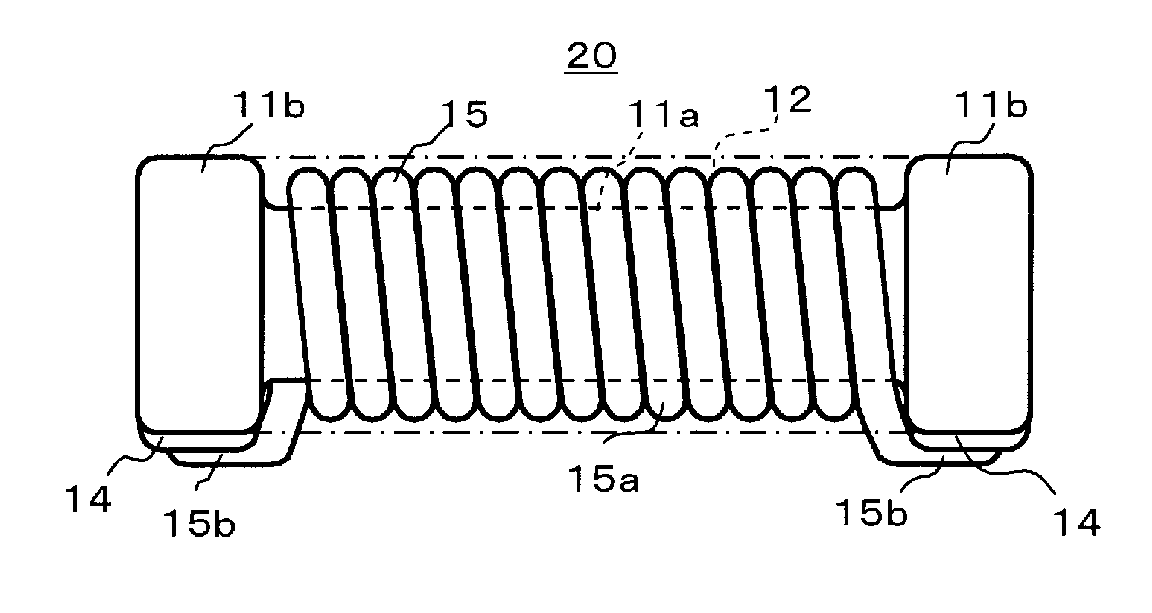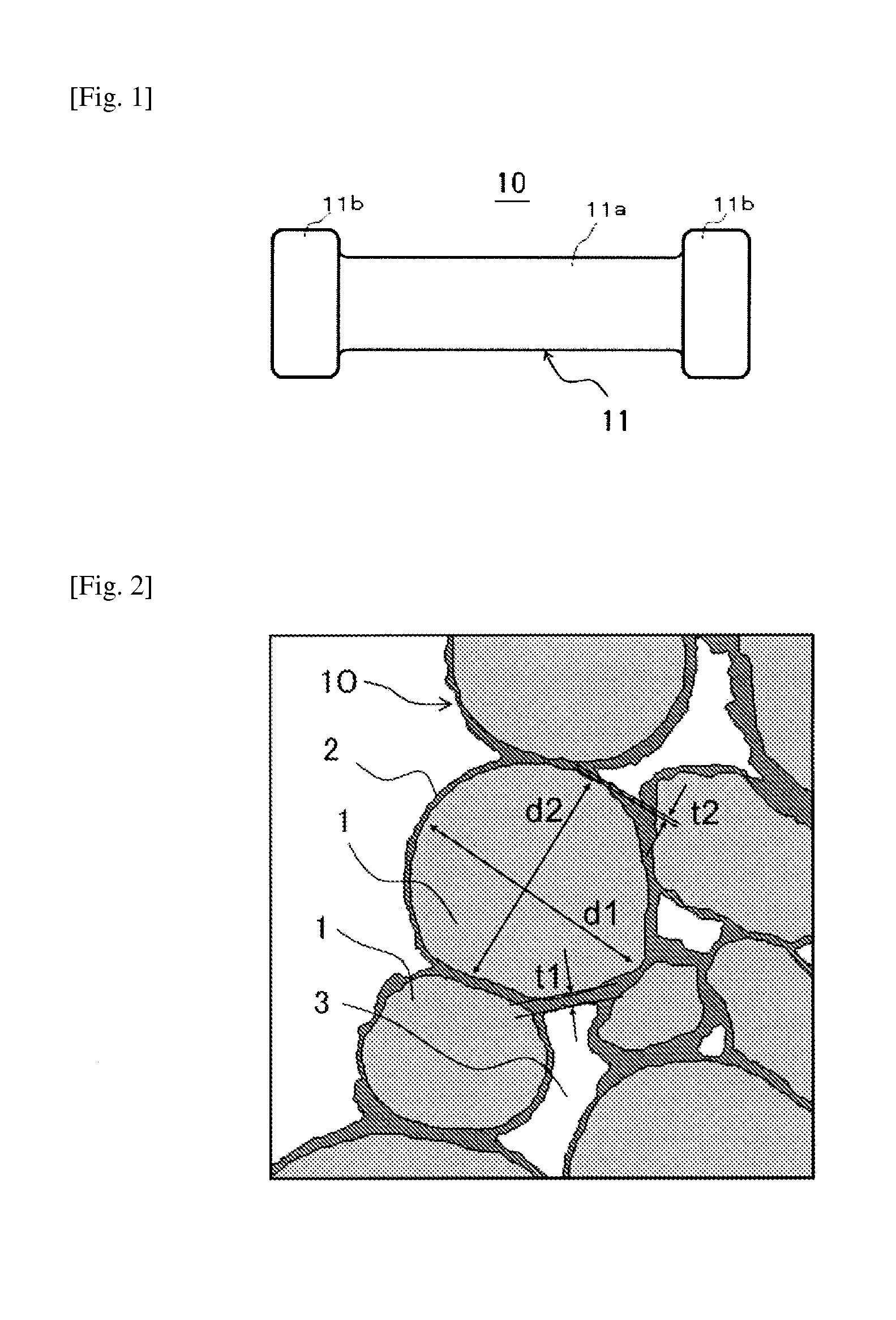Coil-type electronic component and its manufacturing method
a manufacturing method and electronic component technology, applied in the direction of inductance, inorganic material magnetism, inductance with magnetic core, etc., can solve the problems of low insulation property of metal magnetic materials themselves, inability to support further size reduction, and increased production cost, so as to achieve high saturation magnetic flux density, low cost, and high magnetic permeability
- Summary
- Abstract
- Description
- Claims
- Application Information
AI Technical Summary
Benefits of technology
Problems solved by technology
Method used
Image
Examples
example 1
[0195]For the material grains to obtain a base material using a soft magnetic alloy for an electronic component, alloy powder (PF-20F manufactured by Epson Atmix) was used which is a type of water-atomized powder whose average grain size (d50%) is 10μ and composition ratio was 5 percent by weight of chromium, 3 percent by weight of silicon and 92 percent by weight of iron. The average grain size d50% of material grains described above was measured using a granularity analyzer (9320HRA manufactured by Nikkiso). Each of the above grains was polished until its cross-section in a thickness direction cutting across roughly the center of the grain was exposed, and the obtained cross-section was captured with a scanning electron microscope (SEM: S-4300SE / N manufactured by Hitachi High-Technologies) at a magnification of 3000 times to obtain a composition image, which was then used to calculate the composition of 1 μm2 near the center of the grain and also near the surface by the ZAF method...
example 2
[0211]Evaluation samples were created in the same manner as in Example 1, except that the composition ratio of material grains was changed to 3 percent by weight of chromium, 5 percent by weight of silicon and 92 percent by weight of iron. The obtained results are shown in Tables 1 and 2.
[0212]As shown in Tables 1 and 2, all of the results of measurement and judgment were favorable, as in Example 1, with the magnetic characteristics being 1.46 T in saturation magnetic flux density Bs and 43 in magnetic permeability μ, strength of the base material being 2.8 kgf / mm2, volume resistivity being 2.0×105 Ωcm, and formability of metal plating layer being ◯, SEM-EDS analysis confirmed that the grains were bonded with one another via the metal oxide (oxide layer) formed on the surfaces of the grains by the heat treatment, and the oxide layer was an oxide containing an element that oxidizes more easily than iron (here chromium) by a quantity larger than that in the alloy grains.
example 3
[0213]Evaluation samples were created in the same manner as in Example 1, except that the average grain size (d50%) of material grains was changed to 6 μm. The obtained results are shown in Tables 1 and 2.
[0214]As shown in Tables 1 and 2, all of the results of measurement and judgment were favorable, as in Example 1, with the magnetic characteristics being 1.45 T in saturation magnetic flux density Bs and 27 in magnetic permeability μ, strength of the base material being 6.6 kgf / mm2, volume resistivity being 3.0×105 Ωcm, and formability of metal plating layer being ◯, SEM-EDS analysis confirmed that the grains were bonded with one another via the metal oxide (oxide layer) formed on the surfaces of the grains by the heat treatment, and the oxide layer was an oxide containing an element that oxidizes more easily than iron (here chromium) by a quantity larger than that in the alloy grains.
PUM
| Property | Measurement | Unit |
|---|---|---|
| thickness | aaaaa | aaaaa |
| size | aaaaa | aaaaa |
| temperature | aaaaa | aaaaa |
Abstract
Description
Claims
Application Information
 Login to View More
Login to View More - R&D
- Intellectual Property
- Life Sciences
- Materials
- Tech Scout
- Unparalleled Data Quality
- Higher Quality Content
- 60% Fewer Hallucinations
Browse by: Latest US Patents, China's latest patents, Technical Efficacy Thesaurus, Application Domain, Technology Topic, Popular Technical Reports.
© 2025 PatSnap. All rights reserved.Legal|Privacy policy|Modern Slavery Act Transparency Statement|Sitemap|About US| Contact US: help@patsnap.com



